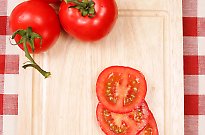
Good taste matters

Why we like the foods we do
Counting carbs and think you need more protein? Focus on taste instead, writes Jenan Taylor.
Don’t let MasterChef fool you. We’re foodies – every one of us. Have been since the day we latched onto our mothers with our newborn lips and supped on our first course of warm colostrum.
In fact, we’ve been obsessed with describing food and trying to demystify taste since Aristotle.
Now – salty, sour, sweet, bitter, and, depending on your cultural and philosophical outlook, either pungent or umami (Japanese for savoury) tastes – rule our senses, if not our lives.
Each taste is, well…just a taste, but when they marry together with smell, you get flavour.
Of course, the salted caramel confection that comforts you might be road tar to me. It’s about nature versus nurture, and a great deal more, finds John Prescott, psychologist, food researcher and author of Taste Matters – why we like the foods we do.
We’re all very keen on what tastes good, however; and in Western culture, we worship hard and often at the altar of flavour.
So much, Prescott notes, that in our increasing celebration of extraordinary flavours, “there is no consideration of either nutrition or satiety”.
And now, some 40 per cent of Australians are obese.
The hunger games
Our lifestyle means that many of us often are locked in a high-taste cycle.
“People have moved away from the art of the kitchen and cooking and they’re looking for an immediate fix for hunger, which manufacturers produce as quick foods that are empty of nutrition and have people hungry. They’re unsated because they’re not getting the nutrient levels that they need to feel satisfied,” says Holly Davis, chef, author and director of Food by Holly Davis.
“Levels of fat, sugar and salt are thrown into the processing of foods that really does make them more attractive,” adds sensory scientist, Associate Professor Russell Keast of Deakin University.
“As our consumption of processed foods and overprocessed foods goes up, so does our intake of these appetitive compounds, and then we start to get into the disease conditions, the high-count obesity and associated pathology.
“When we’re talking about health, it’s a very clear-cut story that we need to reduce our consumption of processed foods, ” Keast says.
While Western approaches to food typically focus on carbohydrates, proteins and fats, people with an avid interest in healthy cooking understand that taste is crucial to a well-balanced meal.
Although the traditions of many cultures embrace this outlook, East-Asian cuisines are widely known for their architecture, in which colour, texture and opposite tastes complement each other.
The resulting balance and harmony, notes Sydney Rockpool’s owner, Neil Perry, in his similarly titled tome on Asian cooking, “ … has made me a much better cook of Western food”.
The authentic dishes of Vietnam, Thailand and others are underpinned by a traditional Chinese medicine (TCM) view of health that Davis calls, “A theory for looking at the universe as a whole. The belief is that the five elements – earth, wood, fire, metal, water, or spring, summer, late summer, autumn and winter – correspond with many things, and flavour is one aspect.”
The tao of taste
Sweet foods are not just about lollies and sugary drinks. They’re also about complex carbohydrates such as sweet potatoes, carrots and corn, which traditional Chinese medical practitioners believe help strengthen the pancreas.
Bitter foods such as cucumber, mustard greens and grapefruit are known to help fight heart disease, but are also “associated with summer in five-element theory as they help cool the body”, says Davis.
Salty foods such as sea vegetables, soy and pickles give a flavour lift and are great for muscle contraction. The corresponding season is winter, adds Davis, “You tend to look for things that are longer, slower cooked with a little more salt and less water.”
Sour foods such as lemons, tomatoes and vinegar add zest to salads and stews and are thought to nourish the liver and gallbladder.
Pungent foods including garlic, ginger and chillies help to cut through fatty foods and are associated with helping to clear the lungs and colon of deposits.
Pairing the opposing tastes may give rise to creations like hot and sour Tom Yum soup or sweet and silky salted caramel. “The opposites control one another: sweet and salty, salty and bitter, bitter and pungent, pungent and sour, sour and sweet. If you take apart a dish, you can see how those things work,” Davis says.
But put away your lab coat and fix yourself a cup of tea, because, she points out, the last thing you want is for brilliant, nourishing food to be a mind-bending exercise.
“Cooking is a sensorial and alchemic art form, not an exact science,” she says. “People go for sensational over sensorial, about how they can whack someone over the head with something completely unique. And, they miss the mark, terribly. It’s not about ‘now I’ve got sweet, now I must add salty’”.
For healthy food that sings, she believes you must pay attention to produce and source from the way in which it is prepared to the people you’re cooking for, and not least to your intuition.
Origins
It helps to have respect for the ingredients and when they are available.
Restaurateur Frank Camorra enshrines such traditions in the manifesto of his Spanish eatery, Movida: “ Be led by the season and let the produce create the menu.” And whether cooking in Spain or Australia “consider the produce, climate and culture in each country, find the similarities and help them work together”.
It’s a simplicity Davis echoes. “I’d never combine something like coconut with olives, for instance. Their cultural roots are absolutely opposed to one another. If you want to make interesting food, find a point of interest within one culture.”
Preparation
For Davis, where and how food is prepared can revitalise the cook’s connection to food – colour and texture is as important in the kitchen as it is in the meal.
“Inspire yourself by having a really beautiful sharp knife and a beautiful wooden board to chop on. That is part of the five-elements theory as well – the wooden board and metal knife – as well as the things you do that alters the food from one state to another. Time, temperature, water, salt and pressure are what transforms the character of food, so again, whether you’re stir-frying or steaming and the way in which you do that plays a role in the flavour afterwards.
“Put in something that you can see, some ingredients that are beautiful in front of you. Maybe have a bunch of flowers or a lovely view that you can look out on. Then give your attention to who it is you’re feeding.”
People
“In every traditional society, the cook would tailor the food for the people they’re cooking for according to the geographical location, the seasons and the type of work they do. A meal for a student lying on the beach in Thailand would be very different to a meal for a labourer in the north of Japan building houses in the snow,” she says, and adds, “It’s about thinking about and naming the kind of experience you’d like to provide someone with, for example, ‘I want people to leave the table feeling satisfied or feeling uplifted.’ Try cooking with that in mind – your food is much more likely to hit the mark.”


